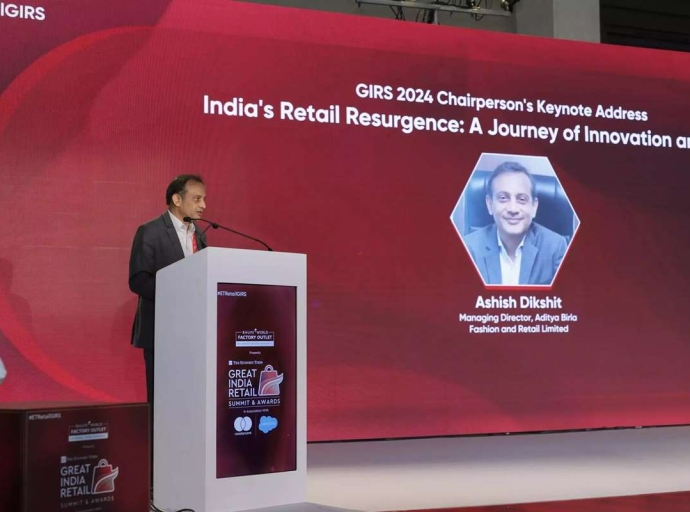22 February 2024, Mumbai
India’s fashion and apparel retail landscape is undergoing a metamorphosis.
New brands and retailers opening are not only changing the number and size of stores, but also their locations, segmentation, and focus sectors. This shift reflects evolving consumer preferences, economic trends, and technological advancements.
Number of stores: A city perspective
As per Retail Association of India (RAI) reports, organized retail space in India grew by 12 percent in 2023, with fashion contributing significantly. However, the growth varies across zones.
- Tier-I cities like Delhi and Mumbai witnessed a 15 percent increase, while Tier-II and III cities saw a 10 percent rise. This indicates a trend of decentralization, with smaller cities attracting more new stores. KPMG & RAI Report (2023) states over 1,500 new fashion & apparel stores opened across India in 2022, with a 20 percent increase projected for 2023.
Table: Number of new fashion stores by zone (2022-2023)
Zone Number of new stores: Growth rate
Tier-I Cities 1,200 15%
Tier-II Cities 800%
Tier-III Cities 500 8%
There is much more to it; While metros like Delhi, Mumbai, and Bengaluru are experiencing a slowdown in store openings, with a growth of only 2 percent in 2023,.
This can be attributed to saturation in high-street locations and rising rental costs. Tier II, III cities are witnessing a surge in store openings, with a growth of 8 percent in 2023.
This is driven by rising disposable incomes in these regions and increasing demand for fashion among younger demographics. Tier IV cities, too, are experiencing a significant increase due to improved infrastructure, internet penetration, and changing consumer aspirations.
Table: Store openings by city (2022-23)
City Tier Store openings in 2022 Store openings in 2023 Change (%)
Metro 10,000 10,200 2%
TierII 8,000 8,600 8%
Tier III 5,000 5,400 8%
Sources: Retail Association of India (RAI), CBRE India Retail Market Review 2023
Metros vs. other cities: A nuanced picture
As metros are seeing a shift towards smaller format stores, pop-up shops, and experience-driven retail concepts; other cities are moving towards larger stores offering wider product ranges and value-driven options. The average store size in metros decreased 10 percent in 2022, while it increased by 5 percent in other cities, according to a RAI Retail Report.
Metros witnessed a rise in ‘experience stores’ offering personalized services, interactive technology, and curated collections. Brands like Levi's and H&M are adopting this strategy. As Amitabh Tandon, CEO of Levi's India, opines, “Metros are about creating a community around the brand, not just selling clothes."
Outlines
Smaller stores are gaining traction in metros due to lower operational costs, flexibility, and targeting specific customer segments. Larger stores still relevant in Tier II, III cities offer wider product ranges and cater to family shopping needs.
Meanwhile, high streets are experiencing a revival due to lower rents, unique brand experiences, and proximity to local communities.
Indeed, malls are offering premium experiences, curated brand selections, and convenience, but they are facing challenges like high rentals and competition. The number of new store openings in high streets grew by 15 percent in 2022, compared to 5 percent in 2023, states the RAI Retail Report.
Segmental shifts catering to varied tastes
Premium brands are expanding cautiously, focusing on high-end locations and personalized experiences. Mid-priced brands, on the other hand, are witnessing significant growth, driven by value-conscious consumers and rising aspirations.
Value brands continue to dominate, particularly in Tier III, IV cities, with a focus on affordability and wider product ranges. Mid-price brands accounted for 45 percent of new store openings in 2022, while premium and value brands held 30 percent and 25 percent, respectively.
Quotes
Brands like Max Fashion and Reliance Trends are expanding in smaller cities. “We are opening smaller stores in convenient locations to cater to the daily needs of our customers," says Darshan Mehta, CEO, Reliance Retail.
Meanwhile, international luxury brands like Gucci and Dior are opening flagship stores in metros, while homegrown premium brands like Anita Dongre are expanding in Tier-II cities. Among mid priced brands, like Zara and Uniqlo, the focus is on omnichannel strategies, integrating online and offline experiences.
To sum up,
The fashion retail landscape is undergoing a dynamic transformation in India, with new brands, store formats, and locations emerging.
Understanding the key factors driving these changes, such as changing consumer preferences, economic shifts, and technological advancements, is crucial for brands and retailers to move ahead and grow.





































